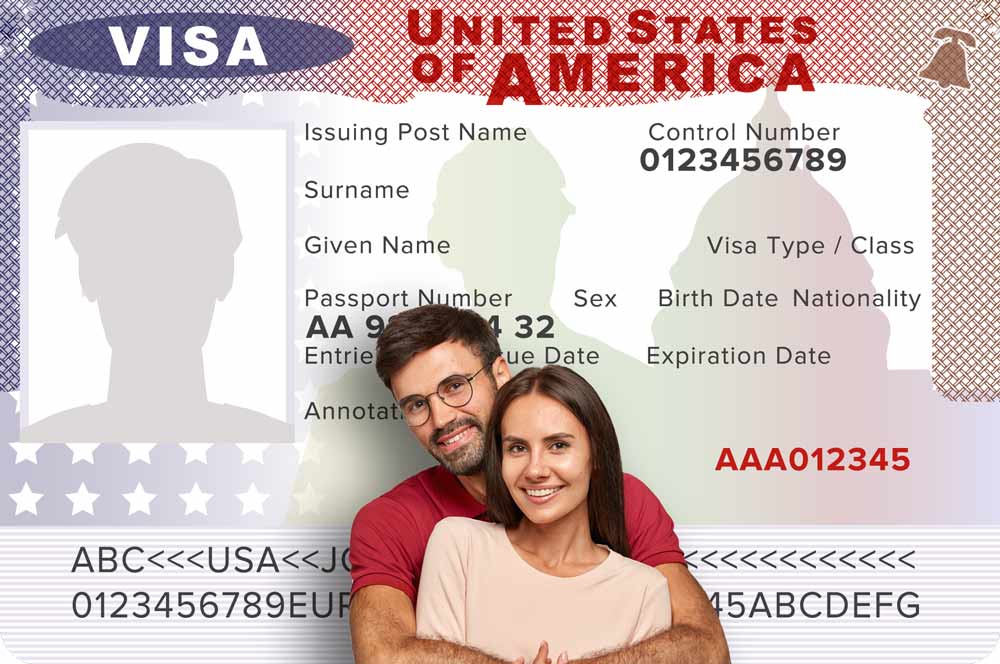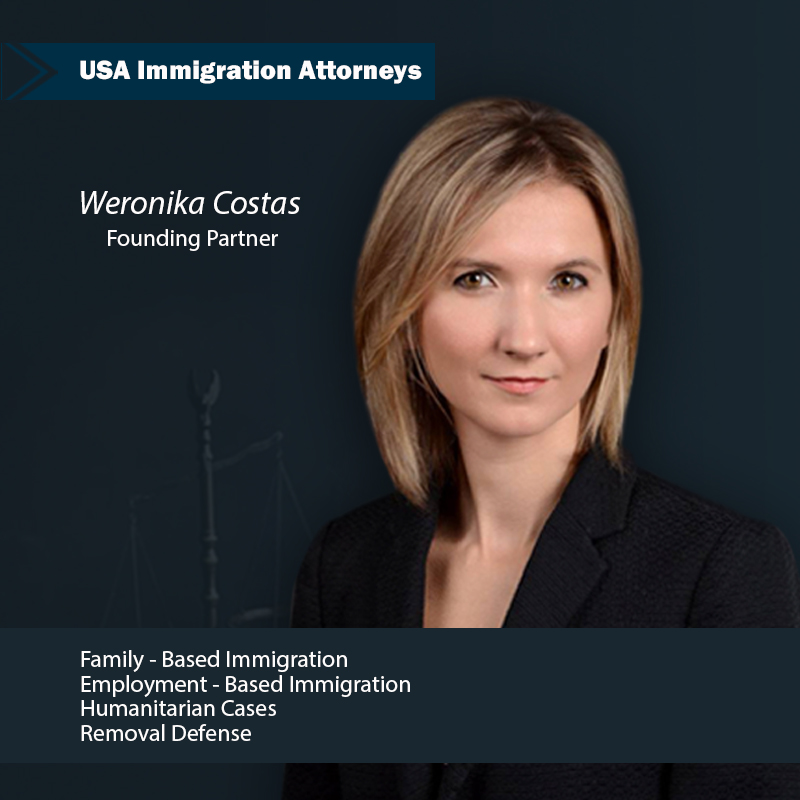Introduction
For engaged couples separated by international borders, the K-1 visa, commonly known as the Fiancé(e) visa, offers a pathway to reunite and build a life together in the United States. The K-1 visa allows a foreign fiancé(e) of a U.S. citizen to enter the country for the purpose of marriage within 90 days of arrival. However, navigating the K-1 visa process can be complex and daunting. This article aims to provide engaged couples with a comprehensive guide to understanding the K-1 visa process, including eligibility requirements, application procedures, and potential challenges, to help make the journey to being together smoother and more manageable.
Understanding the K-1 Visa
Begin by understanding the basics of the K-1 visa. Familiarize yourself with its purpose, which is to allow the foreign fiancé(e) of a U.S. citizen to enter the United States solely for the purpose of getting married. The visa is temporary and requires the couple to marry within 90 days of the fiancé(e)’s arrival. It is important to note that the K-1 visa does not automatically grant permanent residency or citizenship status.
Meeting the Eligibility Criteria
To qualify for the K-1 visa, couples must meet certain eligibility criteria.
Relationship Requirements:
Both the petitioner (U.S. citizen) and the beneficiary (foreign fiancé(e)) must be legally free to marry.
The petitioner and beneficiary must have met in person within the past two years before filing the petition, unless meeting in person would violate long-established customs or create extreme hardship for the petitioner.
U.S. Citizenship of the Petitioner:
The petitioner must be a U.S. citizen, not a lawful permanent resident (green card holder).
Intent to Marry:
The petitioner and beneficiary must have a genuine intention to get married within 90 days of the beneficiary’s entry into the United States.
Proof of Relationship:
Evidence must be provided to establish the bona fide nature of the relationship, such as photographs, travel itineraries, correspondence, joint financial documents, etc.
Financial Requirements:
The petitioner must demonstrate that they have the financial ability to support their fiancé(e) without relying on public assistance. This may include submitting proof of income, employment, assets, or a joint sponsor who meets the financial criteria.
Medical Examination:
The beneficiary must undergo a medical examination by an approved panel physician to ensure they do not have any communicable diseases of public health significance.
Criminal Record:
Both the petitioner and beneficiary must not have any significant criminal history or previous violations of U.S. immigration laws.
Legal Capacity to Marry:
Both parties must be legally eligible to marry, meaning they are of the appropriate age and not already married to someone else.
It’s important to note that the eligibility requirements may vary or change over time, so it’s recommended to consult the official USCIS website or seek legal advice for the most up-to-date and accurate information regarding the K-1 visa process.
Initiating the K-1 Visa Process
The K-1 visa process begins with the U.S. citizen petitioner filing a Form I-129F, Petition for Alien Fiancé(e), with U.S. Citizenship and Immigration Services (USCIS). This form establishes the intent to marry and initiates the background checks and approval process. After approval, the case is forwarded to the U.S. embassy or consulate in the foreign fiancé(e)’s country for further processing.
Gathering Supporting Documentation
Accurate and comprehensive documentation is crucial to a successful K-1 visa application. Both the petitioner and the foreign fiancé(e) must provide evidence of their relationship, including engagement proof, communication records, and statements from friends and family.
Additionally, they must submit personal documents such as:
Form I-129F: Petition for Alien Fiancé(e):
The completed and signed Form I-129F, which serves as the primary petition for the K-1 visa.
Proof of U.S. Citizenship:
A copy of the U.S. citizen petitioner’s valid passport, birth certificate, or certificate of naturalization.
Passport Photos:
Passport-style photographs of the U.S. citizen petitioner and the foreign fiancé(e).
Proof of Relationship:
Documentation to demonstrate the genuineness of your relationship, such as photographs together, travel itineraries, joint bank account statements, shared lease or utility bills, emails or letters exchanged, etc.
Affidavit of Support (Form I-134):
A completed and signed Form I-134, Affidavit of Support, to demonstrate that the U.S. citizen petitioner has the financial ability to support the foreign fiancé(e) during their stay in the United States. Supporting evidence, such as tax returns, employment verification, and bank statements, should be included.
Proof of Intent to Marry:
Evidence to show that you have a genuine intention to marry within 90 days of the foreign fiancé(e)’s entry into the United States. This can include an engagement ring receipt, wedding plans, or a statement from both parties describing your plans to marry.
Birth Certificates:
Certified copies of birth certificates for both the U.S. citizen petitioner and the foreign fiancé(e).
Divorce or Death Certificates (if applicable):
If either party has been previously married, provide divorce decrees, annulment documents, or death certificates of the former spouse to establish legal termination of previous marriages.
Police Certificates:
Police certificates or clearances from the foreign fiancé(e)’s home country or any country where they have resided for six months or more since the age of 16. This is to demonstrate that the beneficiary does not have a criminal record.
Medical Examination:
The foreign fiancé(e) must undergo a medical examination by an approved panel physician to ensure they do not have any communicable diseases of public health significance.
Visa Application Forms:
The foreign fiancé(e) will need to complete the online DS-160 application form and pay the associated fee.
Remember that these are general requirements, and additional documentation may be necessary depending on the specific circumstances of your case and the requirements of the U.S. embassy or consulate processing your application. It’s recommended to consult the official USCIS website or the embassy/consulate’s instructions for a comprehensive list of required documents and any additional requirements specific to your situation.
It is essential to follow the specific guidelines provided by USCIS and the U.S. embassy or consulate to ensure all required documents are included.
Completing the Consular Interview
Once the petition is approved, the foreign fiancé(e) will be scheduled for a consular interview at the U.S. embassy or consulate.
The interview is a critical step in the process, as it allows the consular officer to assess the bona fide nature of the relationship. Both partners should be prepared to answer questions about their relationship history, future plans, and individual backgrounds.
Here are some tips to help you navigate the consular interview process:
Thoroughly Review Your Application:
Familiarize yourself with all the information you provided in your visa application. Be prepared to answer questions about your personal details, relationship history, and intended marriage plans.
Organize Your Supporting Documents:
Ensure that you have all the necessary supporting documents neatly organized and easily accessible. Review them before the interview to refresh your memory on the details they contain.
Be Honest and Consistent:
Answer all questions truthfully and consistently. Consistency is key in demonstrating the authenticity of your relationship and intentions. Any inconsistencies in your answers or supporting documents may raise concerns.
Practice Your Responses:
Anticipate potential questions and practice your responses beforehand. This will help you feel more confident during the interview. Common questions may include how you met, details of your relationship, future plans, and the cultural backgrounds of both partners.
Demonstrate Genuine Relationship:
Be prepared to provide evidence and anecdotes that showcase the genuine nature of your relationship. This may include photos, travel itineraries, communication records, and joint financial documents. The consular officer wants to see that your relationship is bona fide and not solely for the purpose of obtaining a visa.
Communicate Clearly and Calmly:
Speak clearly and confidently during the interview. If you don’t understand a question, politely ask the consular officer to repeat or clarify. Stay calm and composed, even if you feel nervous. Take your time to gather your thoughts before answering.
Dress Professionally:
Present yourself in a professional manner. Dress appropriately for the interview, as you would for a formal occasion. Your appearance can make a positive impression.
Be Respectful and Courteous:
Treat the consular officer with respect and maintain a polite demeanor throughout the interview. Answer questions directly and avoid unnecessary elaboration unless asked for further details.
Be Prepared for Language Barriers:
If English is not your first language, consider bringing an interpreter who is fluent in both English and your native language. This can help ensure effective communication and avoid misunderstandings.
Stay Positive:
Maintain a positive attitude throughout the interview. Even if faced with challenging questions or doubts raised by the consular officer, remain composed and provide thoughtful responses.
Remember, each consular interview is unique, and the specific questions asked may vary. The key is to be well-prepared, confident, and honest in your responses. If you have any concerns or uncertainties, consult with an immigration attorney or seek guidance from reliable sources to ensure you are well-informed and adequately prepared for the interview.
Entering the United States on a K-1 Visa
Upon approval of the K-1 visa, the foreign fiancé(e) can enter the United States within the visa’s validity period.
It is important to note that the visa holder must marry the U.S. citizen petitioner within 90 days of arrival.
After marriage, the couple can proceed with adjusting the foreign spouse’s status to obtain lawful permanent residency (green card). This process involves filing additional forms, attending an interview, and providing supporting evidence of the bona fide marriage.
Potential Challenges and Tips
Navigating the K-1 visa process may come with its fair share of challenges. Delays in processing times, document requests, or visa denials can be stressful for the couple.
To mitigate these challenges, it is crucial to stay organized, follow instructions diligently, and seek legal guidance if needed. Maintaining open and clear communication with USCIS and the U.S. embassy or consulate can help address any issues that may arise.
Additionally, cultural and language barriers may pose challenges during the consular interview. It is essential for both partners to practice their interview responses, be confident, and provide consistent and truthful answers.
Being well-prepared with thorough knowledge of each other’s backgrounds, relationship history, and future plans can help overcome any communication barriers.
Conclusion
The K-1 visa process is an important pathway for engaged couples seeking to build a life together in the United States. By understanding the eligibility requirements, initiating the process correctly, gathering comprehensive documentation, and preparing for the consular interview, couples can navigate the K-1 visa process with more confidence and ease. It is crucial to remain patient and resilient throughout the process, as well as seek professional advice when necessary.
Here at Costas Network, we have helped numerous couples with their immigration process. We understand how difficult it is to be far from your loved one so we go over every little detail with you to increase the probabilities of a positive outcome. With determination, preparation, and adherence to the requirements, we can help you successfully obtain a K-1 visa and take your first steps towards a future together in the United States.



